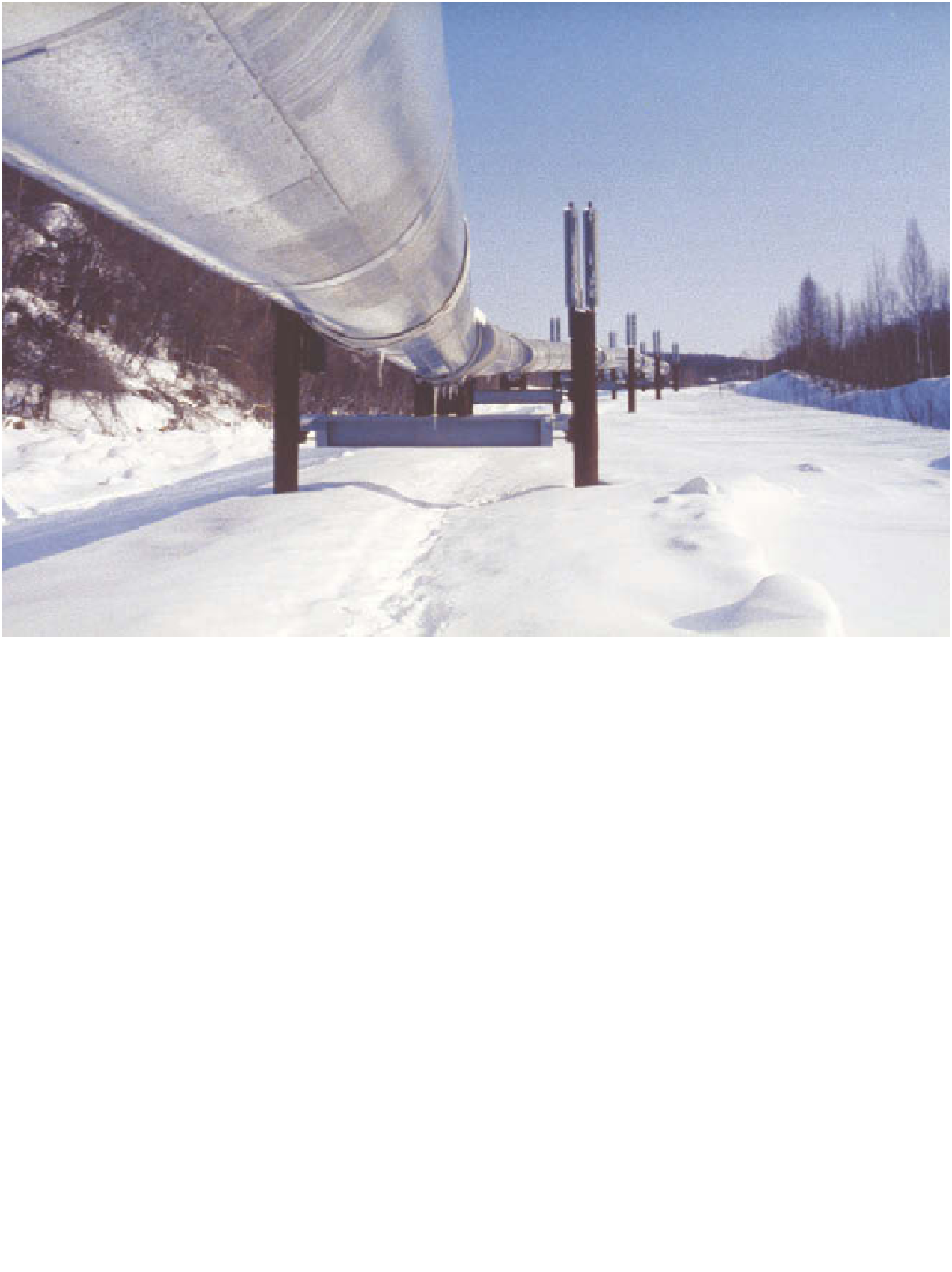Geoscience Reference
In-Depth Information
Plate 24.21
The Trans-Alaska (Alyeska) oil pipeline is designed to avoid the twin engineering problems of permafrost and
geological faulting. Automatic refrigeration units on top of the vertical members maintain the permafrost around each footing.
The design allows the pipe to move along the cross-beam under earthquake displacement.
Photo: Ken Atkinson
vehicles disrupting the tundra vegetation. Even a single
pass of a tracked vehicle over sensitive terrain causes
sufficient disturbance to initiate thermal degradation. The
development planned for the three northern peninsulas
of north-west Siberia is far larger than any develop-
ment planned in North America. In North America
the Canadian government is about to commence the
exploitation of the natural gas reserves of the Beaufort
Sea, which will be piped south down the Mackenzie Valley,
to link up with the intercontinental pipeline system.
Environmental studies have been completed, and it is
to be hoped that North America does not repeat the enor-
mous environmental damage that has already occurred
in Siberia.
subject to pollution from distant sources in Europe, North
America and Eurasia since the nineteenth century. For
example, the discovery of DDT residues in Antarctic
penguins in the 1950s was one of the first indicators that
pollution is a global problem. Although the concentra-
tions of contaminants are lower than in temperate regions,
their presence is serious because of their persistence,
due to slow turnover rates in polar ecosystems. Cold
temperatures slow down degradation processes and tend
to condense volatile organic pollutants. The cold slows
evaporation rates also, and this may lead to a continuous
transfer of organic chemicals from warmer parts of the
world. Mammals and birds in polar regions are long-
lived organisms, at the top of long food chains (e.g. whales,
seals and polar bears), and they have high levels of body
fat, which stores contaminants in the body. Many native
Arctic peoples eat large amounts of wild game or 'country
food'; fat, liver, kidneys and heart (often regarded as the
'choicest' parts) are organs where the pollutants are most
Arctic pollution
Although polar regions are still widely regarded as remote
and pristine environments, in reality they have been









































